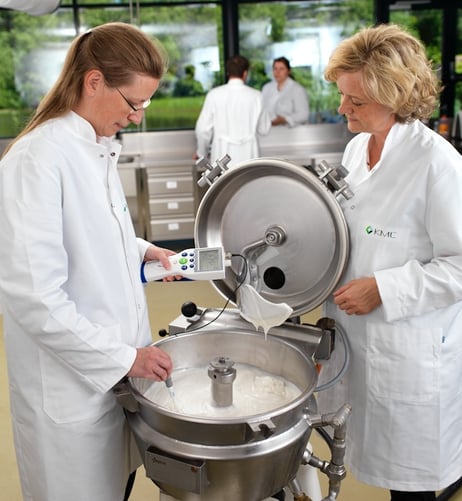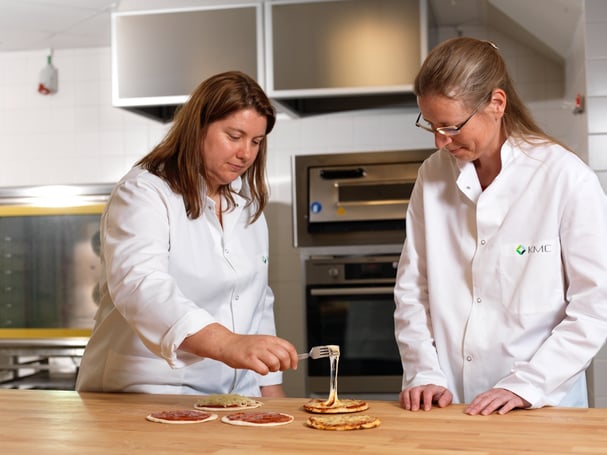This blogpost is made in collaboration with Kasper Steffens, Kasper is our Commercial Manager at KMC. He oversees the Scandinavian and the South East European market. He has an education in Supply Chain Management and has been working at KMC since 2017.
Let’s say you’re a dairy company wanting to enter the plant-based market. You know that more and more customers are requesting vegan alternatives to your dairy-based cheeses, so now is a great time to get started and reapvaluable price-competitive benefits in the growing market for plant-based foods.
Step 1 - Needs assesment
The collaboration begins with a meeting where we figure out what kind of cheese you want to start producing. We’ll make a number of recommendations based on the local conditions in your part of the world and help address issues like resources, equipment, regulations, functionality and ingredient
choices. All of which need to be considered before we move forward with the process.
Step 2 - Recipe development
After the needs assessment, we’ll develop a recipe based on the ingredients and equipment you want to use. You’ll be invited to visit the Food Innovation Centre located at our headquarters in Brande, Denmark, where together we’ll produce a number of small-portion trial batches from the recipe, adapting and adjusting along the way. Maybe the cheese needs a different melting profile. Maybe it should be harder or softer. Or maybe it needs to be able to withstand storage in varying temperature conditions. We’ll take all of this into account when developing the recipe.

Step 3 - Testing period
Once the recipe has been developed, it’s ready to be scaled for production using your own production setup. Typically, the cheese will then undergo a testing period, where it will be subjected to a series of taste tests, shelf-life tests, and tests of how the cheese develops over time and under various storage and handling conditions. KMC is an active part of this process and is happy to help test different conditions.
Step 4 - Launch and ongoing evaluation
After the testing period, the product is ready for launch. Here, we use customer feedback as an active part in the ongoing development of the cheese. Maybe after a while we’ll find out that the cheese is not melting as expected. Maybe the consumer wants a different functionality. Or maybe we’ll need to adjust the amount of starch.
After the testing period, the product is ready for launch. Here, we use customer feedback as an active part in the ongoing development of the cheese. Maybe after a while we’ll find out that the cheese is not melting as expected. Maybe the consumer wants a different functionality. Or maybe we’ll need to adjust the amount of starch.
